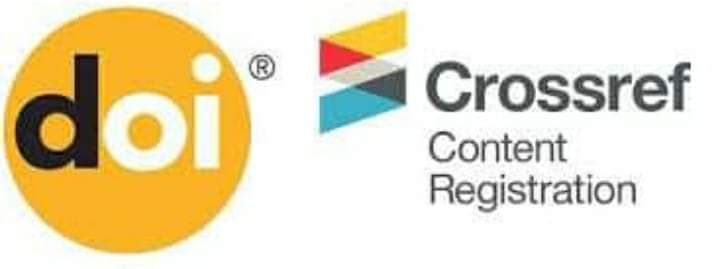Prevalence of Anaemia among Students in the Jardinah Region and Its Relationship to Dietary Behaviours
DOI:
https://doi.org/10.37375/sjfssu.v4i2.2567Keywords:
School students, anemia, breakfast and Benghazi, Jardinah regionAbstract
Background: School students are among the most vulnerable groups to malnutrition. It's possible that it's a result of eating habits that are incorrect, which results in complications and physical changes. These changes may be in the short or long term in successive age stages, which causes many disorders and defects in their healthy development and growth.
Design: This study was conducted during the period of 2022-2023, focusing on the dietary habits of students in four randomly selected schools in the Jardinah area of Benghazi city. The study involved administering a questionnaire to assess dietary behaviours, including breakfast consumption, fruit intake, water consumption, and measuring haemoglobin levels. The study sample consisted of 33 male and female students, ranging in age from 9 to 18 years.
Results: The study findings revealed that among school students, the prevalence of anaemia was 15.5% for males and 12.1% for females, the highest rates observed in the 9-11-year-old age group. Additionally, a significant proportion of students demonstrated healthy dietary habits. Specifically, (60.6%) of the participants reported regular breakfast consumption, while (54.5%) reported consuming fruits. Furthermore, the study highlighted that (42.4%) of the students reported regular water intake.
Conclusions: It has been found that schoolchildren typically adhere to the habit of having breakfast, eating a substantial amount of fruits and vegetables, and regularly drinking water. This may be a contributing factor to the moderately low prevalence of anaemia compared to the classification established by the World Health Organization for the severity levels of anaemia.
References
Aditian, N., (2009). Faktor-Faktor yang Mempengaruhi Kejadian Anemia Gizi Remaja Putri SMP 133 di Pulai Pramuka Kepulauan Seribu Tahun 2009 (Skripsi). Universita Indonesia, Jakarta.
Brown, J., Isaacs, J., Krinke, U., Murtaugh, M., Stang, J., & Wooldridge, N. (2004). Nutriton Traught the Life Cycle, ed. Thomson Wadsworth, USA.
Dallman, P. R., Siimes, M. A., & Stekel, A. (1980). Iron deficiency in infancy and childhood. American Journal of Clinical Nutrition, 33(1), 86-118.
Deshmukh-Taskar, P. R., Nicklas, T. A., O'Neil, C. E., Keast, D. R., Radcliffe, J. D., & Cho, S. (2010). The relationship of breakfast skipping and type of breakfast consumption with nutrient intake and weight status in children and adolescents: the National Health and Nutrition Examination Survey 1999-2006. Journal of the American Dietetic Association, 110(6), 869-878
Dykman, R., & Rivik, R. T. (2002). Effects of a school breakfast on mental arithmetic task performance. Pediatric Academic Society, 51, 453.
Edmonds, C. J., & Jeffes, B. (2009). Does having a drink help you think? 6–7-Year-old children show improvements in cognitive performance from baseline to test after having a drink of water. Appetite, 53(3), 469-472.
Elrotob, A., (2021). Study and evaluation of the diet for school children in the age group of 6-12 years in some schools. Journal for Scientific Publishing (AJSP), vol. 28.
Fleming, D. J., Tucker, K. L., Jacques, P. F., Dallal, G. E., Wilson, P. W., & Wood, R. J. (2002). Dietary factors associated with the risk of high iron stores in the elderly Framingham Heart Study cohort. The American journal of clinical nutrition, 76(6), 1375-1384.
Giovannini, M., Verduci, E., Scaglioni, S., Salvatici, E., Bonza, M., Riva, E., & Agostoni, C. (2008). Breakfast: a good habit, not a repetitive custom. Journal of International Medical Research, 36(4), 613-624.
Janus, J., & Moerschel, S. K. (2010). Evaluation of anemia in children. American family physician, 81(12), 1462-1471
Jbireal, J. M., & Azab, A. E. (2020). Prevalence of Iron Deficiency Anaemia among School Children in Sabratha, Western Libya. Archives of Hematology and Blood Diseases V3. I1, 26
Kordas, K., Stoltzfus, R. J., Lopez, P., Rosado, J. L., Vargas, G. G., Rico, J. A., ... & Cebrián, M. E. (2004). Blood lead, anemia, and short stature are independently associated with cognitive performance in Mexican school children. The Journal of nutrition, 134(2), 363-371.
McCool, A. C., Myung, E., & Chien, T. C. (2006). Modification of the form in which fresh fruit is served as a possible means of increasing the consumption of fruit offered to elementary and middle school students. Journal of Foodservice Business Research, 8(2), 73-85.
Mohapatra, S., Maity, S., Behera, B., & Mohanty, S. (2014). Prevalence of anemia among school going children (< 12 years of age) in selected slum schools of Bhubaneswar, Odisha. IOSR Journal of Nursing and Health Science, 3(6), 42-6.
Musaiger, A. O., & Gregory, W. B. (1992). Dietary habits of school-children in Bahrain. Journal of the Royal Society of Health, 112(4), 159-162.
Musaiger, A. O. (2012). Musaiger, A. O. (2012). The Food Dome; dietary guidelines for Arab countries. Nutricion hospitalaria, 27(1), 109-115.
Musaiger, A.O., Hassan, A.S. & Obeid, O. (2011a). The paradox of nutrition-related diseases in the Arab countries: the need for action. Int. J. Environ. Res. Public Health, Vol. 8 No. 9, pp. 3637-3671.
Musaiger, A.O., Bader, Z., AL-Roomi, K. & D’Souza, R. (2011b). “Dietary and lifestyle habits amongst adolescents in Bahrain”, Food Nutr. Res., Vol. 55.
Raman, A., Schoeller, D. A., Subar, A. F., Troiano, R. P., Schatzkin, A., Harris, T., ... & Tylavsky, F. A. (2004). Water turnover in 458 American adults 40-79 yr of age. American Journal of Physiology-Renal Physiology, 286(2), F394-F401.
Rampersaud, G. C., Pereira, M. A., Girard, B. L., Adams, J., & Metzl, J. D. (2005). Breakfast habits, nutritional status, body weight, and academic performance in children and adolescents. Journal of the american dietetic association, 105(5), 743-760.
Sawka, M. N., Cheuvront, S. N., & Carter, R. (2005). Human water needs. Nutrition reviews, 63(suppl_1), S30-S39.
Soliman, G. Z., & Azmi, M. N. (2007). Prevalence of anemia in Egypt (Al-Gharbia governorate). The Egyptian Journal of Hospital Medicine, 28(1), 295-305.
Stookey, J. D., Constant, F., Gardner, C. D., & Popkin, B. M. (2007). Replacing sweetened caloric beverages with drinking water is associated with lower energy intake. Obesity, 15(12), 3013-3022.
Tesfaye, M., Yemane, T., Adisu, W., Asres, Y., & Gedefaw, L. (2015). Anemia and iron deficiency among school adolescents: burden, severity, and determinant factors in southwest Ethiopia. Adolescent health, medicine and therapeutics, 189-196.
Wang, D. D., Li, Y., Bhupathiraju, S. N., Rosner, B. A., Sun, Q., Giovannucci, E. L., ... & Hu, F. B. (2021). Fruit and vegetable intake and mortality: results from 2 prospective cohort studies of US men and women and a meta-analysis of 26 cohort studies. Circulation, 143(17), 1642-1654
Widenhorn-Müller, K., Hille, K., Klenk, J., & Weiland, U. (2008). Influence of having breakfast on cognitive performance and mood in 13-to 20-year-old high school students: results of a crossover trial.
WHO, U. (2004). Joint statement by the World Health Organization and the United Nations Children’s Fund. Focusing on anaemia.
Zeinstra, G. G., Koelen, M. A., Kok, F. J., & De Graaf, C. (2007). Cognitive development and children's perceptions of fruit and vegetables; a qualitative study. International Journal of Behavioral Nutrition and Physical Activity, 4(1), 1-11.
Downloads
Published
How to Cite
Issue
Section
License
Copyright (c) 2024 Scientific Journal for Faculty of Science-Sirte University

This work is licensed under a Creative Commons Attribution 4.0 International License.














